In this guide, we will explore the essential garden tools that every gardener should have in their toolkit. Having the right tools can make a world of difference in your gardening journey, allowing you to tackle various tasks with ease and efficiency. From digging and pruning to planting and weeding, these basic garden tools will help you create and maintain a beautiful garden. So, let’s dive in and explore the wonders of these essential garden tools and their uses.
Key Takeaways:
- Having the right garden tools can enhance your gardening experience and make tasks easier.
- Gardening gloves provide protection and comfort while working in the garden.
- Hand pruners and loppers are essential for cutting back plants and trimming branches.
- Garden forks are ideal for turning soil and scooping mulch.
- Hand trowels are versatile tools for transplanting and planting in containers.
- Digging shovels are necessary for moving soil and lifting sod.
- Garden hoes are essential for weeding and preparing flower beds.
- Garden knives are useful for cutting through roots and pruning.
- Hand weeders are great for removing weeds and maintaining a clean garden.
Gardening is a rewarding hobby that allows you to connect with nature and create beauty in your outdoor space. However, to make the most out of your gardening experience, it is crucial to have the right tools by your side. From digging and pruning to planting and weeding, these basic garden tools will simplify your gardening tasks and help you achieve stunning results.
Stay tuned as we explore each of these essential garden tools in detail, highlighting their uses and providing recommendations for high-quality options that will stand the test of time.
Gardening Gloves: Essential Protection for Every Gardener
When it comes to gardening, a good pair of gloves is an essential tool that every gardener needs. Whether you’re handling thorny plants or working with soil, gloves provide the necessary protection for your hands. They not only shield your skin from potential injuries like cuts and scratches, but they also offer a barrier against dirt, chemicals, and allergens.
When choosing gardening gloves, it’s important to consider the specific tasks you’ll be performing and the level of protection you require. Here are some key factors to consider:
- Durability: Look for gloves made from durable materials that can withstand frequent use and resist tears or punctures.
- Fit: Gloves should fit snugly but not too tightly. The right fit ensures comfortable movement and prevents gloves from slipping off while working.
- Water Resistance: Gardening gloves with water-resistant properties help keep your hands dry and comfortable, especially when working with wet soil or watering plants.
- Breathability: Look for gloves with breathable fabrics that allow air circulation to prevent your hands from becoming hot and sweaty.
- Wrist and Forearm Protection: Longer cuffs provide additional protection to your wrists and forearms, guarding against scratches and keeping soil from entering the gloves.
When choosing gardening gloves, it’s essential to find a pair that not only provides protection but also fits comfortably,” says botanical photographer Ellen Hoverkamp. I recommend Foxgloves, which are made of high-tech sport fabric that is water-resistant, breathable, and provides a form fit described as a ‘second skin’.
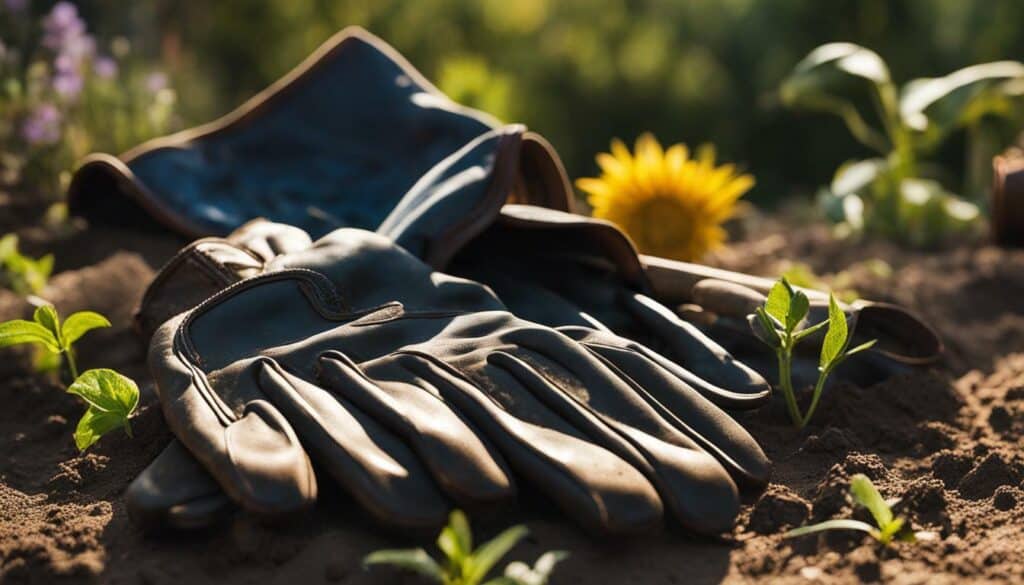
Investing in a high-quality pair of gloves is worth it, as they will last longer and provide better protection. Proper care and maintenance, such as regular cleaning and storing them away from sunlight and water, will ensure their longevity.
In conclusion, having a dependable pair of gardening gloves is essential for every gardener. They not only protect your hands from potential injuries and irritants but also enhance your gardening experience by allowing you to work comfortably and confidently.
Hand Pruners: Indispensable Cutting Tools for Gardening
Hand pruners, also known as secateurs, are versatile cutting tools that are indispensable for any gardener. From trimming plants to harvesting fruits and vegetables, hand pruners are a must-have tool for various gardening tasks. Whether you have a small backyard garden or a large-scale farm, hand pruners can make your gardening experience more efficient and enjoyable.
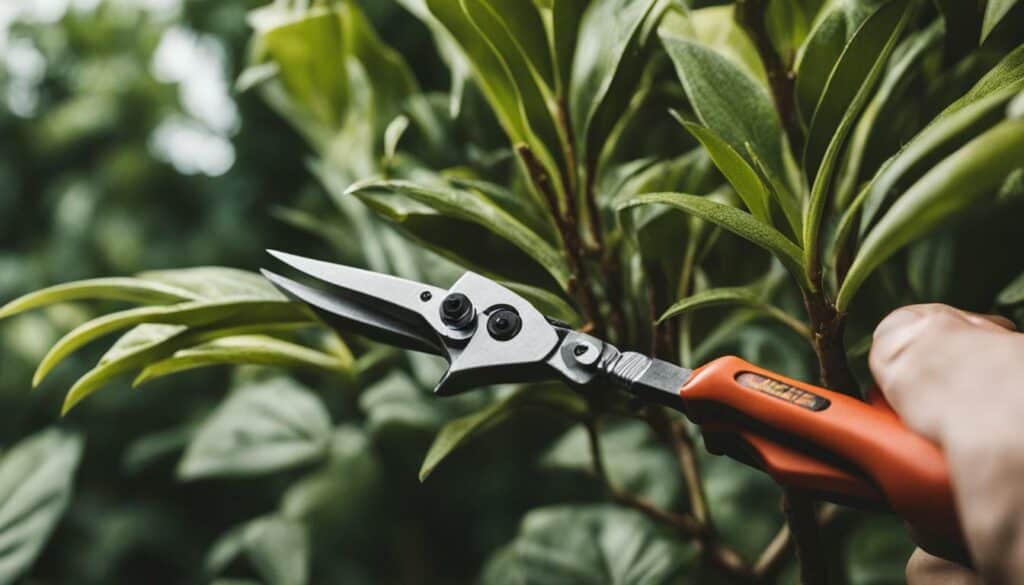
When it comes to choosing hand pruners, it’s important to consider the type of cutting action you prefer. Anvil-style pruners have a sharp blade that meets a flat surface, similar to a knife on a board. These pruners are best for cutting dead wood and should be avoided for fresh, green stems and branches as they can cause crush injuries.
Anvil-style pruners are best for dead wood and can cause crush injuries to fresh, green stems and branches,” says Ellen Hoverkamp, a botanical photographer.
On the other hand, bypass pruners have a sharp blade that passes by a sharp-edged flat surface, similar to scissors. These pruners are ideal for cutting live plants and green wood, as they provide cleaner cuts and reduce the risk of injury to the plants.
It’s crucial to choose hand pruners that fit comfortably in your hand for better control and ease of use. Additionally, consider investing in ratcheting pruners, which provide increased cutting strength, making them perfect for individuals with reduced hand strength or arthritis.
To ensure the longevity and effectiveness of your hand pruners, regular maintenance is essential. Keep the blades sharp by sharpening them regularly and following proper cleaning and storage practices.
For anvil-style pruning tools, Hoverkamp recommends ratcheting pruners that offer increased strength and can cut through thicker or harder branches with ease. These pruners provide a more efficient cutting experience, saving you time and effort. With the right pair of hand pruners in your gardening toolkit, you’ll be well-equipped to tackle a wide range of cutting tasks in your garden.
When it comes to tackling thicker branches in the garden, loppers are the go-to tool.
These long-handled pruners provide the leverage and cutting strength needed to handle larger branches with ease. Loppers have a similar design to hand pruners, but with longer handles that allow for greater reach and more power when cutting through thicker branches. They come in different types, including anvil and bypass loppers, each with its own advantages for specific cutting tasks.
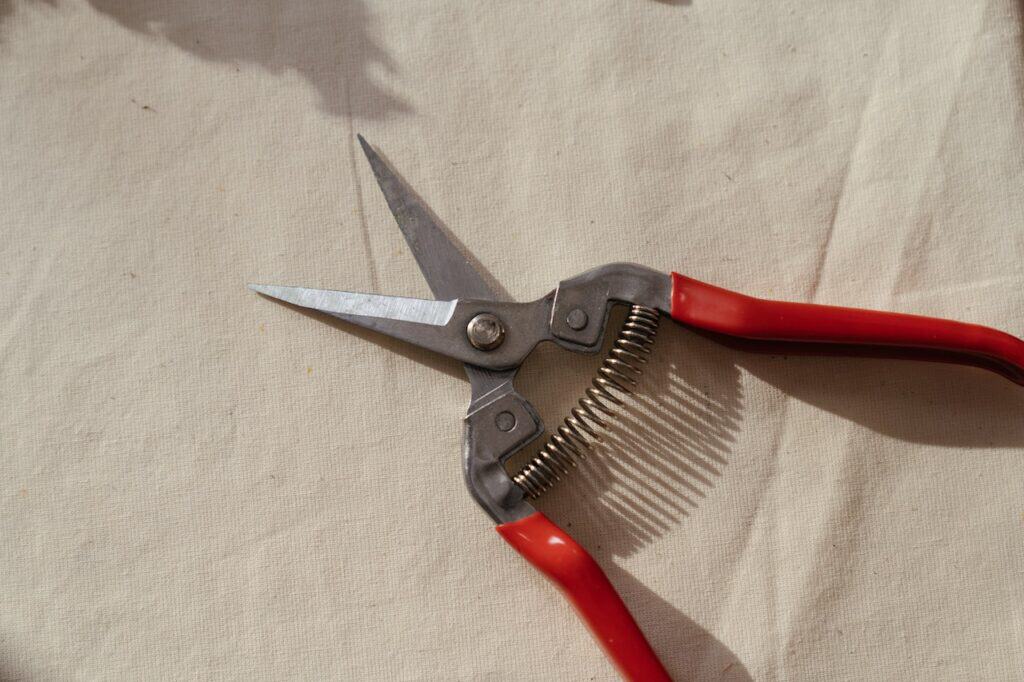
Anvil loppers have a sharp blade that meets a flat surface, similar to a knife on a cutting board. These loppers are ideal for cutting dead wood or branches, as the anvil design provides greater cutting force. However, they may cause crush injuries to fresh, green stems and branches.
Bypass loppers have two sharp blades that pass by each other, similar to a pair of scissors. This design ensures cleaner cuts and is better suited for live plants and green wood. Bypass loppers are versatile and can be used for a variety of pruning tasks in the garden.
When choosing loppers, consider the length of the handles. Longer handles provide increased leverage, making it easier to cut through thicker branches. However, longer-handled loppers may be heavier and more difficult to maneuver, especially in tight spaces.
Maintaining and sharpening the blades of your loppers is essential for optimal performance. A sharp blade will make clean cuts and help prevent damage to plants. Regularly clean the blades with a brush and apply lubricating oil to prevent rust and ensure smooth operation.
“Loppers are a must-have tool for any gardener,” says gardening expert Linda Hagen. With their long handles and cutting power, they make it easy to tackle thicker branches and keep your garden looking neat and healthy.
Investing in a high-quality pair of loppers, such as the Tabor Tools GG12 Anvil Lopper, is worth it as they will last longer and provide better cutting performance. These anvil-style loppers can cut through branches up to 2 inches in diameter and are perfect for dry or woody growth. The carbon steel blade stays sharp, making cutting easy and efficient.
Garden Forks: Essential Tools for Turning Soil, Digging, and Scooping Mulch
Garden forks are an essential tool for any gardener looking to turn soil, dig into dense soil, or scoop mulch. With their sturdy and durable design, garden forks make these tasks much easier and more efficient. Whether you’re preparing your garden beds for planting or maintaining existing ones, a garden fork is a must-have tool in your gardening arsenal.
There are different types of garden forks available, each designed for specific gardening tasks. When it comes to turning soil and breaking up compacted dirt, a fork with straight tines is ideal. These tines are better suited for digging into the soil and loosening it, making it easier for plants to establish their roots.
| Type of Garden Fork | Uses |
|---|---|
| Straight Tines Garden Fork | Turning soil |
| Curved Tines Garden Fork | Scooping mulch or turning compost piles |
Garden forks with curved tines are perfect for scooping mulch or turning compost piles. The slight curve in the spines of these forks allows for better scooping and lifting of materials, similar to a pitchfork. They are also useful for aerating the soil and improving its overall structure.
A garden fork with curved tines, like the Radius Garden 203 Pro Ergonomic Steel Digging Fork, is my go-to tool for turning soil and aerating my garden beds,” says landscape designer Genevieve Schmidt. It has stainless steel square tines that resist rusting and an ergonomic handle with a non-slip grip. Buy the Radius Garden 203 Pro Ergonomic Steel Digging Fork on Amazon.
When using a garden fork, it’s important to choose the right size and weight that you are comfortable with. Longer handles provide more leverage, but they can be heavier to handle. Additionally, consider the material of the handle. Ash hardwood handles are durable and absorb shock and vibration, providing a more comfortable gardening experience.
Regular maintenance and proper storage of your garden fork are essential for its longevity. Keep the tines clean and dry to prevent rusting, and periodically oil the joints and handle to ensure smooth operation. By taking care of your garden fork, it will serve you well for many gardening seasons to come.
So, whether you’re preparing your garden beds, aerating the soil, or scooping mulch, a garden fork is an indispensable tool. Invest in a quality garden fork, and you’ll be well-equipped to tackle any gardening task with ease and efficiency.
A hand trowel is a versatile tool that every gardener should have in their toolkit
From transplanting plants to planting containers, a hand trowel is essential for precise and efficient gardening. Its small size and narrow blade make it perfect for working in tight spaces and digging small holes. Whether you’re a beginner or an experienced gardener, a hand trowel is a must-have tool.
One of the key uses of a hand trowel is transplanting plants. When you need to move a plant from one location to another, a hand trowel allows you to carefully dig around the root ball and lift the plant out of the ground without causing damage. Its sharp blade can easily cut through soil and roots, ensuring a smooth transition for the plant.
Planting containers is another task where a hand trowel comes in handy. It allows you to dig the perfect-sized hole for your plant and ensure proper placement and depth. Whether you’re planting flowers, herbs, or vegetables, a hand trowel makes the job quick and easy.
A hand trowel is like an extension of my hand when I’m working in the garden. It allows me to dig, transplant, and plant with precision and ease,” says Jane, an avid gardener.
When choosing a hand trowel, look for one with a comfortable handle that fits well in your hand. This will make it easier to work for extended periods without discomfort. Stainless steel blades are durable and resistant to rust, ensuring that your hand trowel will last for many gardening seasons to come.
Benefits of Using a Hand Trowel
There are several benefits to using a hand trowel in your gardening activities:
- Precision: A hand trowel allows you to dig small, precise holes, ensuring that your plants are properly spaced and positioned.
- Efficiency: With a hand trowel, you can quickly and easily perform tasks like transplanting and planting containers, saving you time and effort.
- Versatility: A hand trowel can be used for a variety of gardening tasks, making it a versatile tool that you’ll reach for again and again.
Remember to clean and dry your hand trowel after each use to prevent rust and keep it in good condition. With proper care, your hand trowel will be a reliable companion in your gardening endeavors.
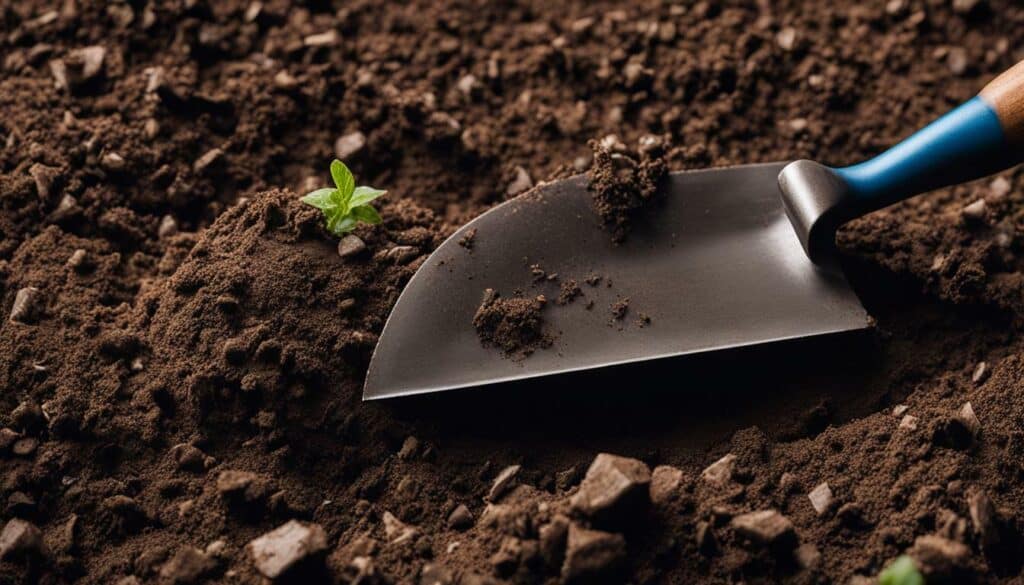
Having a hand trowel in your toolkit is essential for any gardener. Its versatility and precision make it a valuable tool for transplanting plants and planting containers. Invest in a high-quality hand trowel with a comfortable handle and a durable stainless steel blade, and enjoy the ease and efficiency it brings to your gardening tasks.
When it comes to moving soil or lifting sod, a digging shovel is an essential tool for any gardener.
With its sturdy design and sharp blade, a digging shovel makes these tasks much easier and more efficient. Whether you’re preparing a new garden bed, moving soil from one area to another, or lifting sod to create a new lawn, a digging shovel is a must-have tool in your gardening arsenal.
When choosing a digging shovel, look for one with a metal blade that is strong and durable. Stainless steel blades are resistant to rust and hold their sharp edge for longer periods of time. The blade should be sharp enough to easily cut through soil and sod, making your gardening tasks much more manageable.
A digging shovel should also have a comfortable and ergonomic handle that allows for a secure grip. Look for a handle made of sturdy wood or fiberglass, as they are less likely to break or warp over time. The length of the handle should be appropriate for your height, allowing you to maintain a comfortable and efficient posture while using the shovel.
When using a digging shovel, it’s important to use proper technique to avoid strain or injury. Stand with your feet shoulder-width apart and grip the handle firmly with both hands. Use your body’s natural strength to push the shovel blade into the soil or under the sod, then use your legs and arms to lift and move the soil or sod. Avoid lifting with your back to prevent strain and injury.
A digging shovel is not only useful for moving soil and lifting sod, but it can also be used for other gardening tasks such as digging trenches for irrigation, creating borders or edges, and even digging holes for planting trees or shrubs.
Investing in a high-quality digging shovel will ensure that you have a reliable tool that will last for many gardening seasons to come. Take care of your shovel by cleaning it after each use and storing it in a dry place to prevent rust or damage. Regularly sharpen the blade to maintain its cutting efficiency and replace the shovel if the blade becomes worn or damaged.
With a digging shovel in your gardening toolkit, you’ll be equipped to tackle any task that requires moving soil or lifting sod. Enjoy the ease and efficiency that this essential garden tool brings to your gardening experience.
Garden Hoe: A Must-Have Tool for Weeding and Preparing Flower Beds
A garden hoe is a versatile tool that every gardener should have in their arsenal. From weeding to preparing flower beds, a garden hoe is essential for maintaining a healthy and beautiful garden.
When it comes to weeding, a garden hoe is an efficient tool for removing unwanted plants from your garden. The sharp blade of the hoe can easily cut through the soil and sever the roots of weeds, making it easier to pull them out. It is important to choose the right type of garden hoe for the job. For example, a wide-bladed hoe is ideal for removing large areas of weeds, while a narrow-bladed hoe is more suitable for precision weeding around delicate plants.
Not only is a garden hoe great for weeding, but it is also essential for preparing flower beds. Before planting flowers, it is important to loosen the soil and remove any debris or weeds. A garden hoe can easily break up compacted soil and create a loose and fertile bed for your flowers. It can also help create neat and defined edges for your flower beds, giving your garden a polished and well-maintained look.
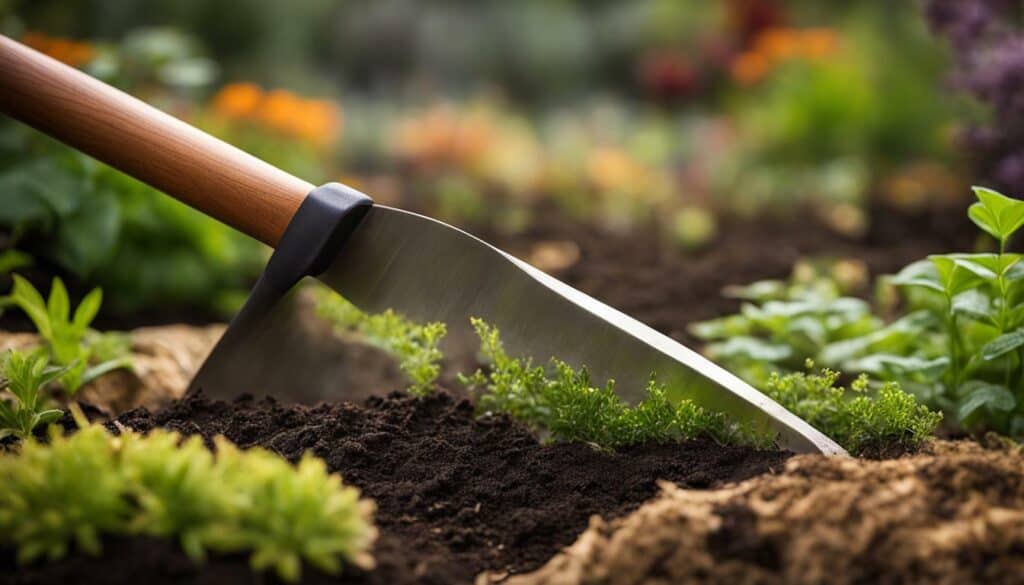
A garden hoe is a simple yet effective tool that can make a big difference in your gardening experience. Whether you are tackling tough weeds or preparing flower beds, a garden hoe will help you achieve the results you desire. Invest in a high-quality garden hoe that feels comfortable in your hands and is durable enough to withstand regular use. With proper care and maintenance, your garden hoe will continue to serve you well for years to come.
Garden Knife: A Must-Have Tool for Every Gardener
A garden knife is a handy tool that can be used for a variety of gardening tasks, from cutting through roots to pruning. With its sharp blades and versatile design, a garden knife is a must-have tool for any gardener.
One of the primary uses of a garden knife is cutting through roots. When transplanting or digging up plants, it’s common to encounter stubborn roots that need to be severed. The sharp blades of a garden knife make this task much easier and more efficient. Whether you’re dividing perennials or removing invasive plants, a garden knife will be your best friend.
In addition to cutting through roots, a garden knife is also ideal for pruning. It allows for precise cuts, making it perfect for shaping plants and removing dead or damaged branches. With a garden knife, you can easily maintain the health and appearance of your garden.
Furthermore, a garden knife can be used for a variety of other tasks, such as opening bags of compost or soil, harvesting vegetables or herbs, and even cutting twine or string. Its versatility makes it an indispensable tool for any gardening enthusiast.
When choosing a garden knife, look for one with a durable and sharp blade. Stainless steel blades are particularly resistant to rust and can withstand the rigors of gardening. Additionally, consider the grip and handle design to ensure comfort and ease of use.
Remember to always handle your garden knife with care and keep it clean and sharp. Regularly cleaning and sharpening the blade will help maintain its effectiveness and longevity.
Expert Recommendation:
“A garden knife is a fundamental tool for any gardener. Its sharp blades and versatility make it an essential companion for various gardening tasks, from cutting through roots to precise pruning. Invest in a quality garden knife, and it will become your go-to tool in the garden.” – Garden expert Ellen Hoverkamp
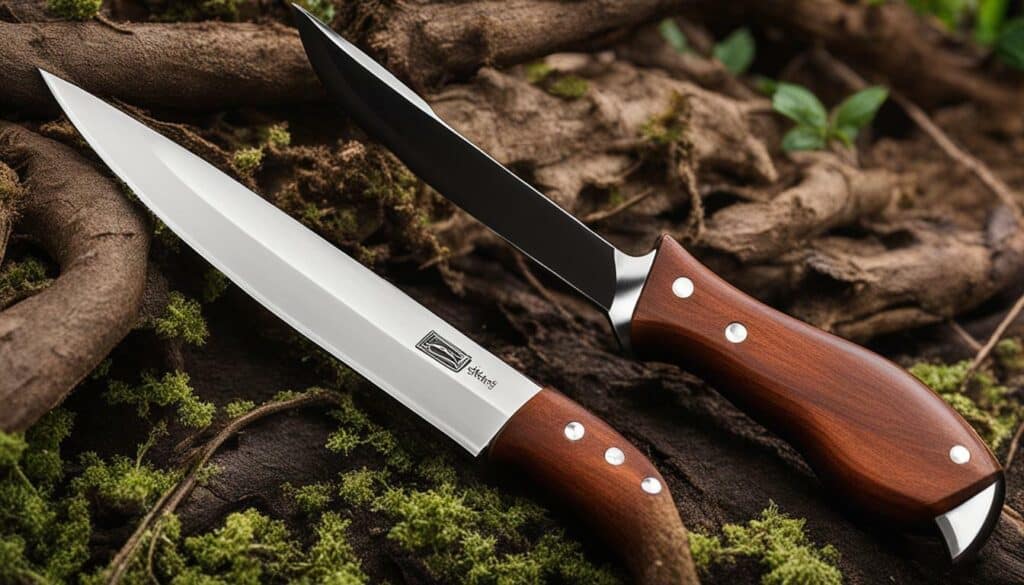
With a garden knife in your toolkit, you’ll be well-equipped to tackle a wide range of gardening projects. Its versatility, sharpness, and durability make it an invaluable tool that every gardener should have.
Hand Weeder: Removing Weeds for Effective Garden Maintenance
Keeping your garden weed-free is essential for maintaining its health and beauty, and a hand weeder is the perfect tool for this task. With its ability to remove weeds from the root, a hand weeder is a gardener’s best friend. Not only does it save time and effort, but it also ensures that weeds are permanently eradicated, preventing them from competing with your plants for nutrients and water.
Using a hand weeder is simple and effective. The long handle provides leverage to easily penetrate the soil, while the forked or hooked blade allows you to grasp the weed at its base and pull it out completely. This method ensures that the entire weed, including its root system, is removed, preventing regrowth and minimizing the need for chemical weed killers.
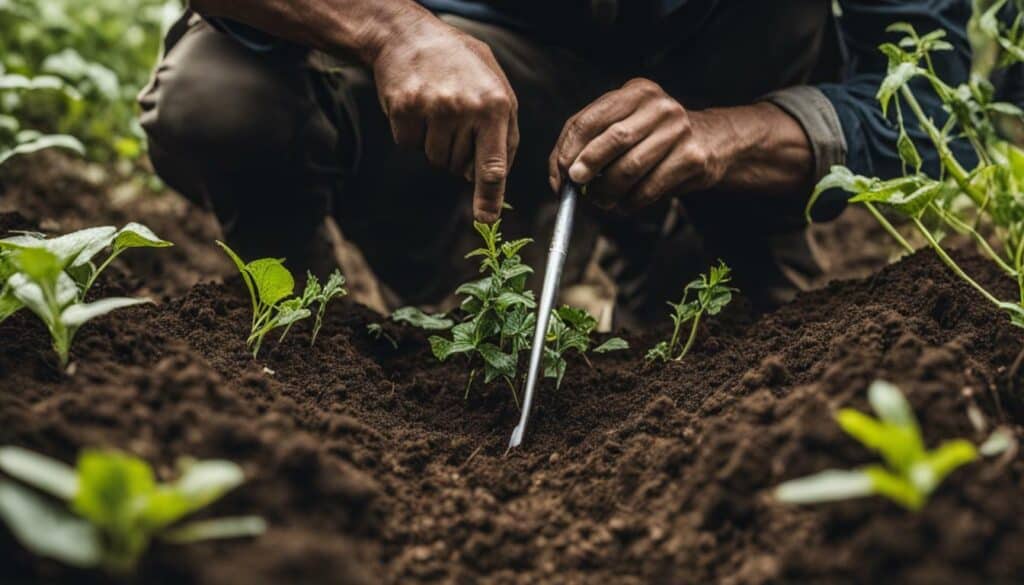
| Benefits of using a hand weeder: |
|---|
| 1. Efficient weed removal: The sharp blade of a hand weeder allows for precise and swift removal of weeds. |
| 2. Eco-friendly solution: By removing weeds manually, you avoid the use of harmful chemicals in your garden. |
| 3. Versatility: Hand weeders can be used in various areas of your garden, including flower beds, vegetable patches, and tight spaces. |
| 4. Prevention of weed spread: Removing weeds from the root prevents them from spreading and taking over your garden. |
When using a hand weeder, it’s important to follow these steps:
- Identify the weed: Learn to differentiate weeds from desirable plants to ensure accurate removal.
- Choose the right time: Weeding is most effective when the soil is moist and weeds are young.
- Position the weeder: Insert the blade of the hand weeder into the soil next to the weed, aiming for the root.
- Gently pull: Apply steady pressure to the handle of the hand weeder, lifting the weed out of the soil along with its roots.
- Dispose of the weed: Place the pulled weeds in a compost pile or discard them to prevent reseeding.
Expert Tip: “Using a hand weeder regularly is a proactive approach to weed control. By removing weeds before they have a chance to spread, you can maintain a healthy and beautiful garden.” – Linda Hagen, Gardening Specialist
Investing in a high-quality hand weeder is a wise decision for any gardener. Look for a hand weeder with a sturdy handle and a durable blade that can withstand the rigors of regular use. Additionally, consider ergonomic features such as a non-slip grip and a comfortable handle shape to reduce strain and fatigue during long periods of weeding.
So, don’t let weeds take over your garden. Arm yourself with a reliable hand weeder and enjoy a weed-free and thriving garden all season long.
Why are Basic Garden Tools Important for Kids Learning Gardening?
Basic garden tools are crucial for kids learning gardening. By utilizing these tools, children develop key skills like hand-eye coordination and responsibility. Moreover, gardening for kids explained includes fostering a sense of appreciation for nature and encouraging healthy eating habits. It also instills a sense of accomplishment as they watch their plants grow and thrive.
In Conclusion: Must-Have Basic Garden Tools and Their Essential Uses
In conclusion, having the right basic garden tools is crucial for any gardener looking to create a thriving and beautiful garden. From gloves to pruners, each tool plays a specific role in making gardening tasks easier and more enjoyable. So, make sure to equip yourself with these must-have essentials and get ready to transform your gardening experience.
One of the most essential garden tools is a pair of gardening gloves. They not only protect your hands from thorns and splinters but also provide a comfortable grip and prevent blisters. Look for durable gloves that are water-resistant and breathable, such as Foxgloves.
Another essential tool is a pair of hand pruners, also known as secateurs. These are used for cutting back plants and harvesting crops. Choose between anvil-style pruners for dead wood and bypass pruners for live plants. Ratcheting pruners provide increased cutting strength and are ideal for individuals with reduced hand strength or arthritis.
Loppers are long-handled pruners that are essential for cutting thicker branches. They are particularly useful for trimming hard-to-reach areas in the garden. Choose between anvil and bypass loppers, depending on the specific task at hand.
Garden forks are an essential tool for turning soil and scooping mulch. They are especially effective in dense or compacted soil. Look for forks with curved spines for scooping mulch and straight tines for digging into the soil.
When it comes to transplanting plants and planting containers, a hand trowel is a must-have tool. Choose a trowel with a broad blade for moving more soil or a long, narrow blade for digging up weeds or working in rocky soil. Stainless steel trowels are more durable and long-lasting.
A digging shovel is essential for tasks such as moving soil and lifting sod. Look for a shovel with a sturdy handle and a stainless steel head for strength and durability. Ash hardwood handles are ideal for absorbing shock and vibration.
Garden hoes are vital for weeding and preparing flower beds. Look for hoes with comfortable handles and sharp blades for better performance. Weeding hoes with open square heads are great for cutting down top growth, while flat hoes are ideal for turning the soil in rows in vegetable gardens.
Garden knives are versatile tools that can be used for cutting through roots and pruning. Hori-hori knives, with a serrated edge on one side and a straight edge on the other, are particularly useful for a wide range of gardening tasks.
Hand weeders are essential for removing weeds and maintaining a clean garden. They are perfect for getting rid of tap-rooted weeds and keeping your garden in top shape.
In conclusion, having the right basic garden tools is essential for a successful gardening experience. Each tool serves a specific purpose and contributes to making gardening tasks easier and more enjoyable. So, invest in these essential tools, take care of them, and get ready to create a thriving and beautiful garden.
FAQ
Q: Why is it important to have the right tools for gardening?
A: Having the right tools for gardening ensures that you can perform tasks efficiently and effectively. It allows you to maintain your garden properly and achieve the desired results.
Q: What are some key features to look for in gardening gloves?
A: When choosing gardening gloves, look for durability, comfort, and protection. Make sure they fit well and provide adequate grip. Water resistance and breathability are also important features to consider.
Q: What are the different types of hand pruners?
A: There are two main types of hand pruners: anvil pruners and bypass pruners. Anvil pruners are best for dead wood, while bypass pruners are better for live plants and green wood.
Q: What are loppers used for in gardening?
A: Loppers are long-handled pruners used for cutting thicker branches and trimming hard-to-reach areas in the garden.
Q: How do garden forks help in gardening?
A: Garden forks are useful for turning soil and scooping mulch or turning compost piles. They are especially effective in dense soil or compacted, rocky, or clay soil.
Q: What are the uses of hand trowels in gardening?
A: Hand trowels are essential for tasks like transplanting bedding plants and herbs, planting containers, and removing weeds. They come in different blade widths to suit various gardening needs.
Q: How can digging shovels be helpful in the garden?
A: Digging shovels are used for digging holes for new plants, dividing plants, and removing dead plants. They are designed to be lightweight with a smaller spade, making them great for various gardening tasks.
Q: What are the different types of garden hoes?
A: There are different types of garden hoes, including weeding hoes, flat hoes, and stirrup hoes. Each type has specific uses in preparing garden and flower beds, cutting down weeds, and turning the soil.
Q: How can garden knives be useful in gardening?
A: Garden knives are versatile tools that can be used for a wide range of tasks, including cutting through roots, weeding, planting, and pruning. They are often designed with serrated and straight edges for different purposes.
Q: What is the purpose of a hand weeder in the garden?
A: Hand weeders are designed to remove weeds from garden beds by slicing through the soil and pulling out the roots. They are particularly effective for tap-rooted weeds and can save time and energy in weed removal.





Leave a Reply